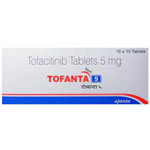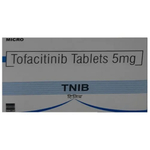tofajak
Introduction to tofajak
Tofajak, also known as Tofacitinib, is a medication primarily used to treat various joint and bowel conditions. It is particularly effective for adults and some children suffering from severe forms of arthritis and ulcerative colitis. By targeting specific enzymes in the body, Tofajak helps reduce inflammation and improve symptoms.
Composition of tofajak
Tofajak contains the active ingredient Tofacitinib, which works by inhibiting enzymes known as Janus kinases (JAKs). These enzymes play a crucial role in controlling inflammation and the immune response.
Uses of tofajak
- Treatment of severe rheumatoid arthritis
- Management of psoriatic arthritis
- Relief for ankylosing spondylitis
- Alleviation of symptoms in severe ulcerative colitis
- Used in children over two years old with juvenile arthritis
Side effects of tofajak
Common side effects:
- Headaches
- Nausea
- Diarrhea
- Abdominal pain
Serious side effects:
- Infections like pneumonia or shingles
- Vomiting
- Acne
Precautions of tofajak
Before starting Tofajak, inform your doctor if you have any infections, smoking habits, cancer, heart issues, or blood clots. It is not suitable for individuals with severe liver disease or hepatitis B or C. If you take too much, seek immediate medical help.
How to Take tofajak
- The typical adult dose is 5 milligrams twice a day.
- For immediate-release tablets, take 5 mg twice daily.
- For extended-release tablets, take 11 mg once daily.
- Swallow extended-release tablets whole; do not crush, chew, or split them.
Conclusion of tofajak
Tofajak is a valuable medication for managing severe joint and bowel conditions. By inhibiting specific enzymes, it effectively reduces inflammation and improves symptoms. However, it is essential to follow the prescribed dosage and take necessary precautions to ensure safe and effective treatment.




















.svg)
